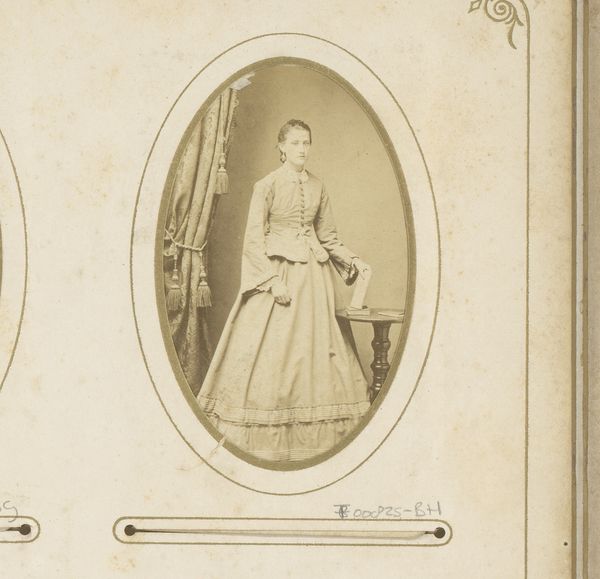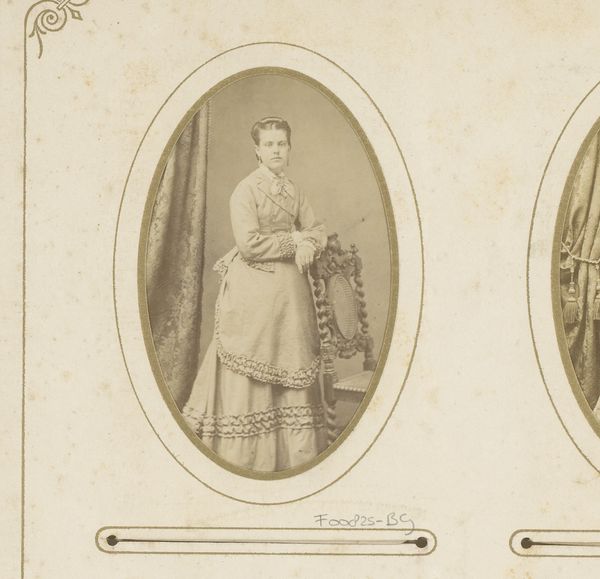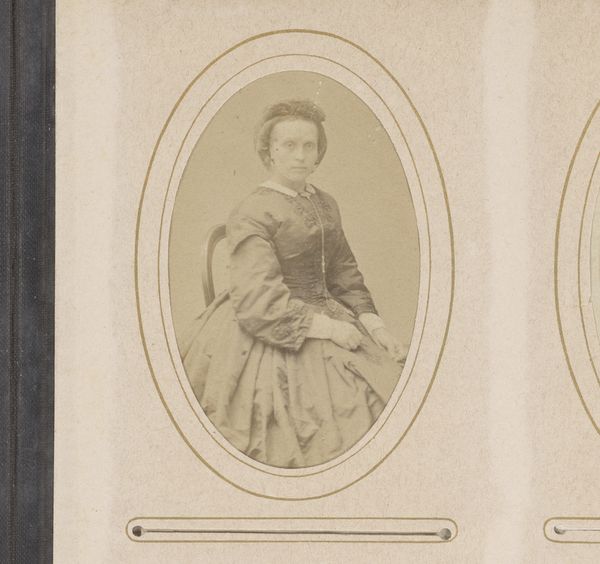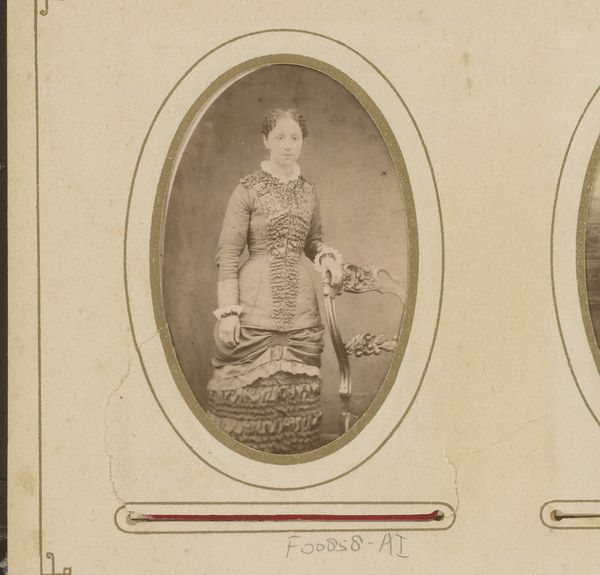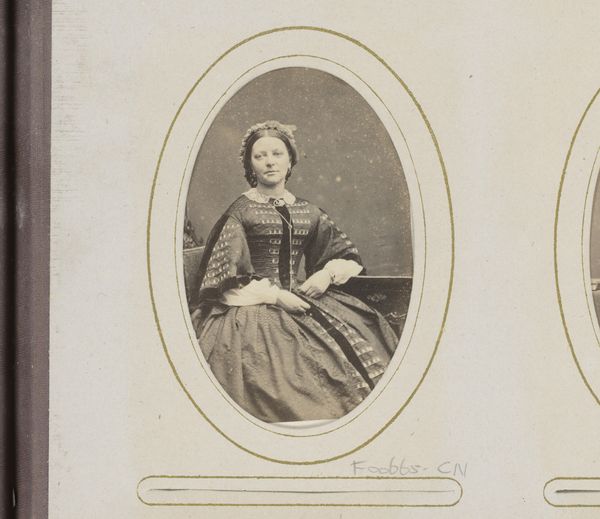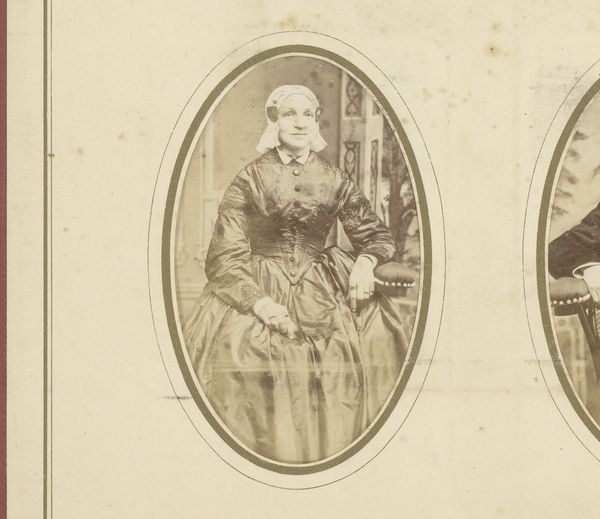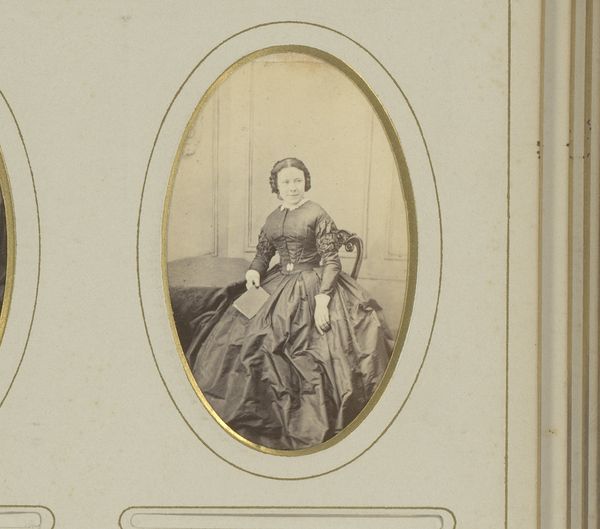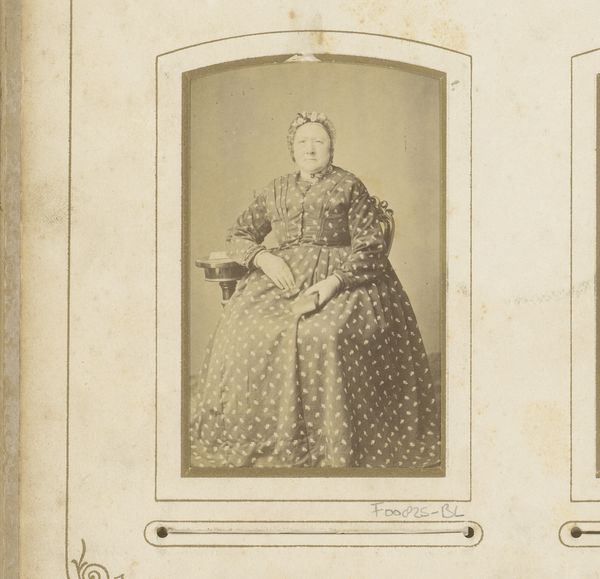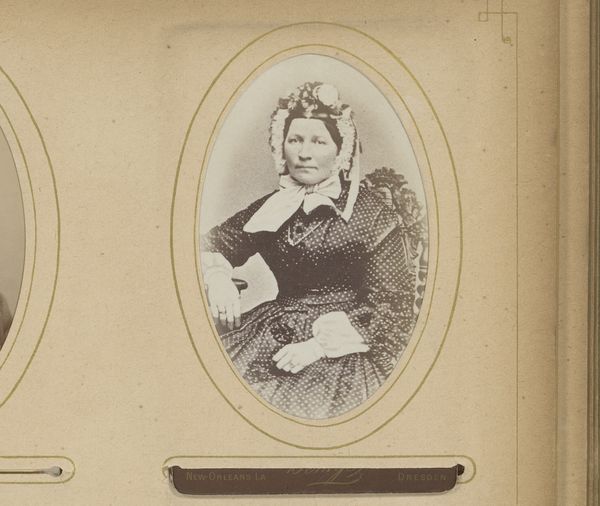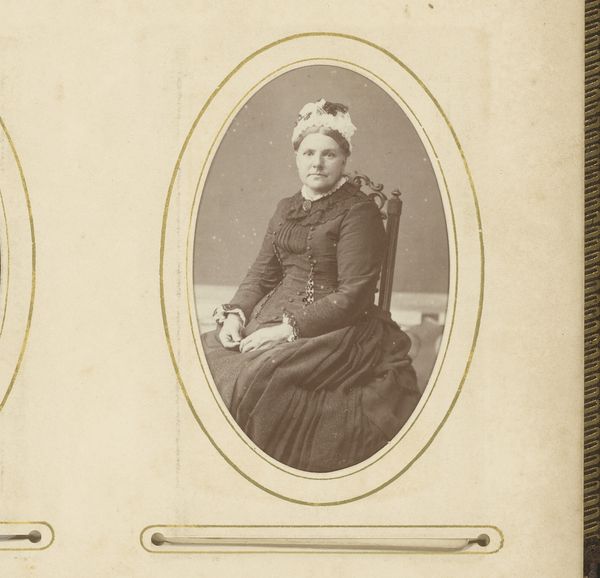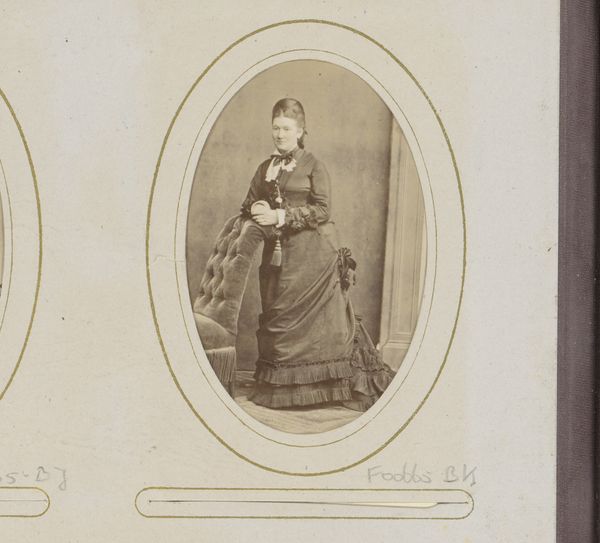
photography, gelatin-silver-print
#
photography
#
gelatin-silver-print
#
19th century
#
academic-art
Dimensions: height 99 mm, width 58 mm
Copyright: Rijks Museum: Open Domain
Curator: Here we have a gelatin-silver print from 1864 by Joh. Isberg entitled "Portret van een zittende vrouw, mogelijk Amanda Hedberg," which translates to "Portrait of a Seated Woman, Possibly Amanda Hedberg." Editor: The tonal range is quite limited. What is striking is the textural detail, especially the fabric of her dress. The dress seems almost constructed. Curator: The oval format itself acts as a framing device, enhancing the figure's self-contained presence. It's fascinating how Isberg uses the structured folds of the dress and its repetitive patterning. They serve to augment a kind of visual rhythm within the static medium of the photograph. The artist carefully balances light and shadow to shape and mold the subject, giving dimension and depth to the photograph, and reinforcing the subject's presence. Editor: Yes, consider what it meant to produce these photographs at this time, and the materiality of gelatin silver. The glass plate negatives required skilled processing and careful control. A process meant that someone would pose, utterly still, in heavy garments— labor on labor—under long exposures, a whole day dedicated to such acts. The relative accessibility of photography provided ways for portraits to circulate beyond the elite. This image provides social data about expectations around gender and labor practices during this time. Curator: Exactly! Her posture and the somewhat severe expression contribute to a sense of reserved dignity that seems entirely appropriate for the conventions of portraiture at the time. It mirrors painting's own historic tradition and elevated subject matter. Editor: While it reflects the tradition, photography itself becomes a commodity—replicable. How it changed expectations of "the portrait," a kind of slow-motion democratization. It adds complexity. Curator: This certainly offers us more than meets the eye in a seemingly simple portrait. Editor: Yes, and looking closer into what something is, and where it comes from, shows the historical complexities surrounding even one gelatin print.
Comments
No comments
Be the first to comment and join the conversation on the ultimate creative platform.
